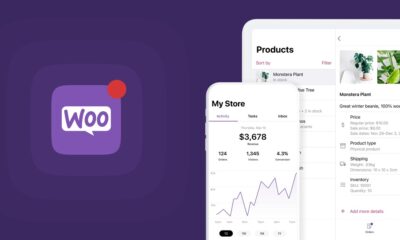Technology
SEO Marketing Strategies That Every Small Business Should Implement Today


Small businesses operating in the digital realm are pitted against difficult odds, namely large corporations boasting more significant marketing dollars and handfuls of employees to take on new campaigns. SEO marketing levels the playing field for small businesses to enhance their online visibility, entice new customers, and grow. However, SEO is a beast, and it can be difficult for small business owners to figure out where they should begin.
In this blog, we discuss how to improve small business SEO and SEO strategies that small businesses can adopt now to ensure life-long growth in search engine rankings.
SEO Basics for Small Businesses
SEO enhances a website’s visibility on SERPs (search engine results pages). If your website is well-optimized, it will rank your search results, increasing the chance of bringing organic traffic to your site. SEO provides a low-cost alternative to traditional advertising channels, especially for small businesses with limited budgets.
But as you can imagine, accomplishing this level of SEO is not easy, and one size does not fit all! Small business owners should stick to strategies that mesh with their goals and consumer segmentation for SEO efforts to succeed correctly. Here are the best of these small business marketing strategies that every small business should implement.
1. Conduct Thorough Keyword Research
Any SEO strategy that seeks to be successful hinges on the quality of its keyword research. This means figuring out how your target audience is finding products or services like the ones you have. When the right keywords are used for optimizing your website, you have a more significant opportunity to rank high in search results.
Tools for Keyword Research:
Free Tool Google Keyword Planner: It allows you to find search volume and competition for any particular keyword.
- Ubersuggest (Free): To get keyword ideas, search volume, and SEO difficulty
- Ahrefs is a powerful SEO tool that gives you an in-depth competitor keyword analysis.
Long-Tail Keywords:
Although high-traffic, competitive keywords seem attractive, small businesses should focus on long-tail keywords instead of those particular, less-competed words or phrases targeting such a niche market. Long-tail keywords have a better conversion rate as they show more intent. This could be a small shoe shop targeting “shoes” but focusing on something more direct, like “affordable running shoes for women.”
Niche Keywords:
- Small businesses can emphasize focus on a niche keyword.
- Your brand may have less direct competition.
- You could capture an audience more likely to convert.
2. Optimize On-Page SEO
On-page SEO includes all the on-site elements you can optimize to make your website rank higher in search rankings. Content, HTML, Architecture of a website Critical On-Page SEO Elements Small Business Should Do right
- Title Tag and Meta Description: Meta description and Title Tags are nothing but the little summaries displayed within search results. You may increase your click-through rates (CTR) with a compelling, keyword-rich title tag and meta description. Do not exceed 60 characters for title labels and 160 for meta representations.
- Header Tags (H1, H2, H3): Structurize your content and make it easier to read with header tags. Your H1 tag should feature your primary keyword and describe what the page is about. Work subtopics into H2 and H3 tags where applicable using secondary keywords. Add 1-2 relevant Internal Links For every piece of content you publish, consider other pieces within your blog that align with or provide additional value to the subject matter.
- Internal Linking: Internal links help search engines learn that your site is organized, walk through the structure of a website, and understand what pages relate to others. Linking related content together increases SEO marketing and the user experience by guiding them to other relevant pages on your site.
- Image Optimization: Alt text All images on your website should have an alt tag. This brief description of the image where you can place your keyword. This helps search engines index your images and even generate traffic from searches on Google Images.
- Mobile-Friendly Design: Since mobile searches now make up over half of all search traffic, a web design that functions well on mobile is essential for ranking high. Your site should respond, which means that it resizes smoothly regardless of browser size and is clickable on mobile devices;
3. Build a Strong Local SEO Presence
Local SEO is Important for Small Businesses, Especially Brick and Mortar. Be sure to have your GMB listing claimed. When users search for things like “coffee shop near me“, they need to allow Google or Bing to know which locations are appropriate, and that is where Local SEO enters the picture.
- Google Business Profile: The first step would be to claim and optimize your Google Business Profile listing. It is a free tool that lets your business appear on Location-Based Services and Google Maps. Ensure your NAP (name, address, and telephone number) are CORRECT AND CONSISTENT wherever you have a listing.
- Local Citations: Always register your business on local directories like Yelp and Yellow Pages for a free listing from Local Business associations. Regular citation activity will strengthen your relationship with search engines and increase the likelihood of you appearing on local searches.
- Online Reviews: Also, have your good clients write positive reviews on Google and other review places like Yelp. Local Reviews: Reviews are another primary ranking factor for local SEO, and good reviews can boost your business’s rankings.
4. Create High-Quality, Engaging Content
When it comes to website optimization, well-written content is the deciding factor, and creating excellent content will often go a long way toward raising your search engine ranks. Providing blog posts, articles, videos, and infographics that can increase your audience’s value is known as content advertising.
- Blogging: One of the best things you can do regarding your customers and improving SEO is to publish posts that deliver answers or insights about common industry questions. Every blog post you publish should target specific keywords and deliver sympathetic information that solves your readers’ problems.
- Evergreen Content: Develop evergreen content (content that will remain useful for an extended period). Evergreen content keeps traffic coming even long after you publish it, while news articles or trend-based posts only drive temporary visitors to your site. These are articles such as how-to guides, product reviews, and frequently asked questions.
- Content-Length and Depth: Engines value content that exhaustively treats a subject. Shorter blog posts (500-700 words) are a compelling method and should not be overlooked, but when ranking for highly competitive keywords, longer content (1,500+ words ) will often work better. Write articles with an eye on offering thorough, factually accurate information.
- Multimedia Content: Multimedia elements such as videos, infographics, and podcasts help increase engagement, which can retain visitors more time on your site, and help with SEO. Videos especially are great for SEO since they offer keyword elements via the title, description, and tags.


5. Utilize Off-Page SEO (Link Building)
Off-page SEO is building your website’s authority and reputation through external factors, primarily by earning high-quality backlinks from other websites. When authority websites in your industry link to your content, search engines automatically associate this with a more reliable and value-driven site.
- Guest Blogging: Make guest posts about your industry in other blogs and get backlinks from them while building up a reputation as an expert. Guest Posting: Try to guest post at high Domain Authority (DA) websites so that you can get more out of those backlinks.
- Social Media Engagement: Yes, social media signal tips today do not serve the purpose of influencing SEO directly. Still, sharing your content on Facebook or LinkedIn helps increase visibility during this website traffic. When more people interact with your content, it will return cleaner and land more backlinks on SEO.
6. Focus on Technical SEO
Technical SEO involves working on the technical aspects so that your website can be crawled and indexed by search engines effectively. These rankings suffer when search engines can’t crawl or understand your site.
- Website Speed: It is a fact that site speed is one of the ranking factors. It takes a billion visitors away from us and negatively impacts our search engine rankings. For a proper audit, you can use tools like Google PageSpeed Insights and GTmetrix to measure your site speed and see what is serving opticals or optimizing, such as image compression, caching, and reducing server response time.
- XML Sitemap: An XML sitemap is a way for you to help search engines better understand the structure of your site while also allowing them to access any additional content easily Your sitemap is entered into Google Search Console and has your updated pages & posts within.
- HTTP: Site Security (An SSL Certificate will ensure that the site is HTTPS): HTTPS is already a ranking factor and is considered more trustworthy by visitors (Google says so).
7. Analyze and Adjust with Analytics Tools
The other half of the battle is implementing SEO strategies, but you must constantly monitor your analytics and adjust when needed. Leverage analytics to analyze your performance and change the course of your plan based on the most significant data.
- Google Search Console: Google Search Console provides you control over your site’s performance in Google search outcomes. It gives you significant data about the indexing status of your site, search queries, and issues like broken links or mobile usability matters.
Conclusion
As our world grows more digital, small businesses are realizing the benefits of SEO as an essential marketing component for increasing their online visibility. Small companies can boost organic traffic and search engine rankings by applying these effective SEO techniques for small businesses- keyword research, both on-page & off-page optimization, local SEO content creation, and technical SEO.
SEO takes time Remain Consistent and Patient. They are not magical and will take some time to see results, but they will help set a small business on the right growth path.

 Model1 month ago
Model1 month agoTiffany Stratton: Biography, Wiki, Age, WWE Career, Net Worth, Before Fame, Boyfriend



 Technology2 months ago
Technology2 months agoHow to Send WooCommerce SMS Notifications for Orders





 Technology1 month ago
Technology1 month ago7 Essential TikTok Metrics to Track for Higher TikTok Views in 2025



 Technology1 month ago
Technology1 month agoTop 5 Tips for Using File Uploads in Your WooCommerce Store Efficiently

 Technology4 weeks ago
Technology4 weeks agoWhy Airlines Are Using Virtual Reality Services for Pilot Training



 General1 month ago
General1 month agoThe Hidden Costs of a DUI & How a Lawyer Can Help You Avoid Them





 Technology4 weeks ago
Technology4 weeks agoExploring TikTok AI: My Experience Making a Video With Only Artificial Intelligence

 Technology3 weeks ago
Technology3 weeks agoHow 3D Modeling Transforms AR Experiences for Online Furniture Stores?






You must be logged in to post a comment Login